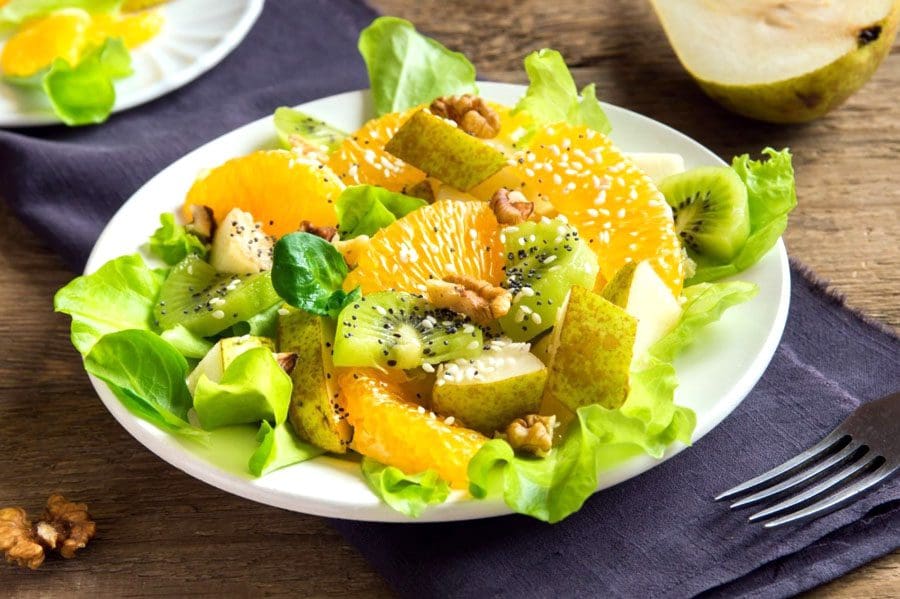
Hydrating Foods, Intense Heat, Health
Medical experts advise that maintaining body hydration is one of the most important things to do in extreme heat. Individuals out in the heat lose electrolytes like sodium, potassium, and chloride and need added electrolytes to prevent cramping and excessive sweating that can strain the body. Dehydration can be dangerous, leading to heat exhaustion and possible heat stroke. If gulping water all day seems like a lot, remember that not all hydration must come from drinking water; there are hydrating foods that contain enough water that can be incorporated.

H2O
The body needs H20 to:
- Deliver nutrients to the cells
- Regulate body temperature
- Prevent infection
- Lubricate the joints
- Maintain organ function
- Help with mood
- Help with Sleep
- Help with Cognition
Electrolytes
Sweating is vital for maintaining body temperature, and electrolytes are essential in maintaining the body’s homeostasis. Electrolytes help coordinate muscle contractions, heart function, and the conductivity of electric signals transmitting to and from the nervous system. The kidneys regulate fluid absorption and excretion to maintain electrolyte balance, but an imbalance can occur when electrolyte levels spike or drop. An electrolyte imbalance is caused by a change in the number of electrolytes in the body. Sodium, potassium, and calcium are the common elements most likely to be affected by an electrolyte imbalance. Other reasons why electrolyte levels can change include:
- Unhealthy diet
- Medications
- Kidney problems
It is recommended that instead of focusing on how many glasses of water have been drunk, concentrate on two biomarkers:
- How often do you urinate?
- What color is the urine?
When the body is thoroughly hydrated, an individual should go to the bathroom every two to three hours, and the urine should be a pale yellow. If it looks orange, it indicates that the body is trying to conserve water and needs further hydration.
Hydrating Foods
Consulting a doctor or nutritionist is recommended to help determine what foods are safe for the individual if there are underlying conditions or other health concerns. Here are a few hydrating foods that contain at least 80 percent water that can be eaten throughout the hot day to maintain body hydration.
Apples
- Best known for their fiber content (up to 5 grams), they are also more than 80 percent water.
- A quick crunchy snack with potassium, vitamin B6, C, and magnesium.
Watermelon
- These can be up to 92 percent water.
- Contain vitamin A, B6, and C, plus lycopene and antioxidants.
- Watermelon can be cubed by itself or with feta cheese, olive oil, salt, pepper, and basil for a sweet-savory salad.
Peaches
- These can contain up to 88 percent water, fiber, protein, and vitamin C.
- Peaches can be added to salsas or incorporated into a salad.
Carrots
- Carrots are around 90 percent water.
- Rich in beta carotene, which the body uses to make vitamin A.
- Vitamin A helps the eyes convert light into a signal sent to the brain, allowing for better sight in dim to dark light.
- Vitamin K
- Potassium
- Fiber
Cucumbers
- Cucumbers have more than 96 percent water.
- They also contain potassium, phosphorus, magnesium, and some calcium.
- They contain nutrients known as cucurbitacins, which can have an anti-diabetic effect.
- Fisetin is an anti-inflammatory substance that helps brain health.
Potatoes
- The waxy variety contains more water, as much as 80 percent.
- They contain potassium, vitamin C, fiber, and minerals.
- Have them baked or roasted with skins to keep as much potassium as possible.
Tomatoes
- Tomatoes are almost 95 percent water.
- They contain cancer-fighting carotenoid lycopene, vitamin A and C, and potassium.
- Sliced onto sandwiches, sauteed into pasta, or blended into a gazpacho.
Cantaloupe
- 90 percent water.
- Contains beta-carotene, fiber, and vitamin C.
- It can be eaten by itself, chopped into salads or smoothies.
Plain yogurt
- One cup of plain yogurt is around 88 percent water.
- It contains protein, gut probiotics, calcium, zinc, magnesium, potassium, and phosphorus.
- Top with some berries for extra hydration.
These are a few hydrating foods that can help with the intense heat. Others include zucchini, iceberg lettuce, strawberries, blueberries, celery, broccoli, and cauliflower. Healthy H2O levels benefits include:
- Decreased appetite.
- Improved physical performance during exercise.
- Increased energy levels.
- Optimal brain function.
What Are The Most Hydrating Foods?
References
Bergeron, Michael F. “Hydration and thermal strain during tennis in the heat.” British journal of sports medicine vol. 48 Suppl 1, Suppl 1 (2014): i12-7. doi:10.1136/bjsports-2013-093256
Gauer, Robert, and Bryce K Meyers. “Heat-Related Illnesses.” American family physician vol. 99,8 (2019): 482-489.
Karppanen, H et al. “Why and how to implement sodium, potassium, calcium, and magnesium changes in food items and diets?.” Journal of human hypertension vol. 19 Suppl 3 (2005): S10-9. doi:10.1038/sj.jhh.1001955
Schiefermeier-Mach, Natalia, et al. “Electrolyte Intake and Major Food Sources of Sodium, Potassium, Calcium, and Magnesium among a Population in Western Austria.” Nutrients vol. 12,7 1956. 30 Jun. 2020, doi:10.3390/nu12071956
Strimbu, Kyle, and Jorge A Tavel. “What are biomarkers?.” Current opinion in HIV and AIDS vol. 5,6 (2010): 463-6. doi:10.1097/COH.0b013e32833ed177







